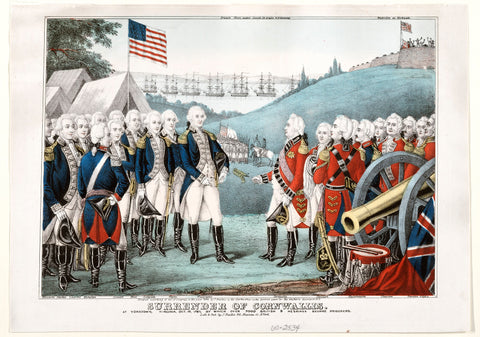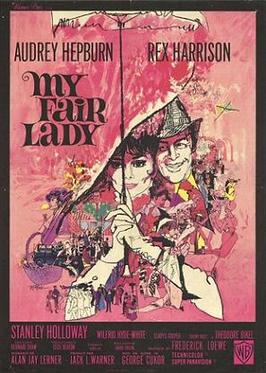October 15

1863
The H.L. Hunley, the world’s first successful combat submarine, sunk during a test run, killing its inventor and seven crew members. The submarine would go on to complete its last mission in 1864 when it sank the U.S.S. Housatonic in shallow water, becoming the first submarine to sink a ship in battle. However, its first successful mission was also its last—the Hunley sank before it returned to Charleston, taking yet another crew down with it. The vessel was raised in 2000, and is now on exhibit in Charleston.

1989
Los Angeles King Wayne Gretzky broke Gordie Howe’s NHL points record (1,850) in the final period of a game against the Edmonton Oilers. Gretzky’s record-setting goal tied the game; in overtime he scored another, and the Kings won 5-4. Gretzky had played in Edmonton for nine seasons and helped the team win four Stanley Cups, so the city’s Northland Coliseum was packed with fans. When he scored his goal, the sellout crowd erupted into a thunderous ovation that lasted for more than two minutes. By the time Gretzky retired at the end of the 1998-99 season, he held or shared 61 NHL records. In all, he scored 894 goals and tallied 1,963 assists for 2,857 points in 1,487 games.

1991
After a bitter confirmation hearing, the U.S. Senate voted 52 to 48 to confirm Clarence Thomas to the U.S. Supreme Court, replacing Thurgood Marshall, the first African American Supreme Court justice. President George Bush nominated Clarence Thomas, a 43-year-old African American judge known for his conservative beliefs, to fill the seat. As the hearings for Thomas’ nomination got underway, he evaded controversy over his conservative views by refusing to state a clear political position. He seemed headed for an easy confirmation until Anita Hill, a former aide, stepped forward and accused him of sexual harassment.
October 16

1923
Walt Disney and his brother Roy founded the Disney Brothers Cartoon Studio in Hollywood, California. The studio, now known as the Walt Disney Company, has had an oversized impact on the entertainment industry and is now one of the largest media companies in the world. Since then, the Walt Disney Company has produced dozens of groundbreaking and acclaimed films. It has evolved into a holding company for all manner of media and entertainment properties, opening theme parks across the world beginning in 1955 and acquiring dozens of companies in the '90s and 2000s. Disney now owns and operates ABC, ESPN, Pixar, Marvel Studios and Lucasfilm. Disney original cartoons and feature films constitute some of the most popular and enduring entries in the American canon.

1968
American runners Tommie Smith and John Carlos ascended the podium to receive the gold and bronze medals for the men’s 200-meter race at the Mexico City Olympics. Once their medals had been placed around their necks, the American flag was raised and “The Star-Spangled Banner” began to play over the loudspeakers, Smith and Jones each raised a fist in the Black Power salute, one of the most famous moments of political speech in the history of the Olympics, and of American sport. The 1968 Olympics were destined to be politically charged, beginning just a few months after the assassination of Dr. Martin Luther King, Jr. Smith and Carlos went on to successful careers as athletes and speakers, and continued their activism. “It was a cry for freedom and for human rights,” Smith later said of the protest. “We had to be seen because we couldn’t be heard.”

1987
In an event that had viewers around the world glued to their televisions, 18-month-old Jessica McClure is rescued after being trapped for 58 hours in an abandoned water well in Midland, Texas. The drama unfolded on the morning of October 14, 1987, when McClure fell through the 8-inch-wide opening of an abandoned well while playing with other children in the backyard of her aunt’s home day-care center. After her rescue, McClure was hospitalized for more than a month and lost a toe to gangrene. Once out of the hospital, McClure went on to lead a normal life. In 2011, at age 25, she gained access to a trust fund—reportedly worth at least $800,000—that was established following her rescue and made up of donations from people around the world.
October 17


1835
Texans approve a resolution to create the Texas Rangers, a corps of armed and mounted lawmen designed to “range and guard the frontier between the Brazos and Trinity Rivers.” In the midst of their revolt against Mexico, Texan leaders felt they needed a semi-official force of armed men who would defend the isolated frontier settlers of the Lone Star Republic against both Santa Ana’s soldiers and Native Americans; the Texas Rangers filled this role. Over nearly 200 years, the Rangers have transformed from a small militia into modern-day Texas’s official state police force.

1931
Gangster Al Capone was sentenced to 11 years in prison for tax evasion and fined $80,000, signaling the downfall of one of the most notorious criminals of the 1920s and 1930s. Prohibition proved extremely lucrative for Capone, who raked in millions from his underworld activities and was at the top of the F.B.I.’s “Most Wanted” list by 1930. Among Capone’s enemies was federal agent Elliot Ness, who led a team of officers known as “The Untouchables” because they couldn’t be corrupted. Ness and his men routinely broke up Capone’s bootlegging businesses. He began serving time at the U.S. Penitentiary in Atlanta, but was transferred to Alcatraz Island after accusations of manipulating the system. Plagued by health problems for the rest of his life, Capone died in 1947 at age 48 at his home on Palm Island, Florida.


1989
The 7.1 magnitude Loma Prieta earthquake hit the San Francisco Bay Area, killing 67 people and causing more than $5 billion in damages, which contributed to the deep recession that California suffered in the early 1990s. The proximity of the San Andreas Fault to San Francisco was well-known for most of the 20th century, but the knowledge did not stop the construction of many un-reinforced brick buildings in the area. Though this was one of the most powerful and destructive earthquakes ever to hit a populated area of the US, the death toll could have been much worse if not for the revised building codes of 1972, which forced new structures to be built to withstand earthquakes.
October 18
1867
The U.S. formally takes possession of Alaska after purchasing the territory from Russia for $7.2 million, or less than two cents an acre. The Alaska purchase comprised 586,412 square miles, about twice the size of Texas, and was championed by William Henry Seward, the enthusiastically expansionist secretary of state under President Andrew Johnson. The American public believed the land to be barren and worthless until gold was discovered in 1899. Alaska is now recognized for its vast natural resources. Today, 25 percent of America’s oil and over 50 percent of its seafood come from Alaska. It is also the largest state in area, about one-fifth the size of the lower 48 states combined, though it remains sparsely populated. The name Alaska is derived from the Aleut word alyeska, which means “great land.”

1931
Thomas Alva Edison, one of the most prolific inventors in history, died in West Orange, New Jersey, at the age of 84. Edison worked into his 80s and acquired 1,093 patents in his lifetime. Perhaps his greatest contribution to the modern industrial world came from his work in electricity. He developed a complete electrical distribution system for light and power, set up the world’s first power plant in New York City, and invented the alkaline battery, the first electric railroad, and a host of other inventions that laid the basis for the modern electric world.

1977
In the sixth game of the World Series against the Los Angeles Dodgers, New York Yankees outfielder Reggie Jackson hit three home runs in a row off of three consecutive pitches from three different pitchers. Only the great Babe Ruth had ever hit three homers in a single World Series game (and he did it twice, once in 1926 and once in 1928) —but he didn’t do it on consecutive pitches or even consecutive at-bats. Jackson’s amazing home-run streak helped the Yankees win the game and the series, the team’s first since 1962.
October 19
1781
Americans defeat the British at Yorktown, Virginia when British General Lord Cornwallis, hopelessly trapped, surrendered 8,000 British soldiers and seamen to a larger Franco-American force, effectively bringing an end to the American Revolution. Although the war persisted on the high seas and in other theaters, the Patriot victory at Yorktown effectively ended fighting in the American colonies. Peace negotiations began in 1782, and on September 3, 1783, the Treaty of Paris was signed, formally recognizing the United States as a free and independent nation after eight years of war.

1982
Automaker John Z. DeLorean was arrested and charged with conspiracy to obtain and distribute 55 pounds of cocaine. DeLorean was acquitted of the drug charges in August 1984 with DeLorean's attorneys arguing his company's financial trouble was the reason the FBI had been able to entrap him in the $24 million drug deal–the authorities knew he would do anything to save his business. Unfortunately, his legal woes were only beginning. He soon went on trial for fraud and over the next two decades was forced to pay millions of dollars to creditors and lawyers. Nevertheless, DeLorean occupies an important place in automotive history. Thanks to its starring role in the 1985 film “Back to the Future,” his gull-wing sports car is one of the most famous cars in the world.

1987
The largest-ever one-day percentage decline in the Dow Jones Industrial Average occurred on "Black Monday." As a number of unrelated events conspired to tank global markets, the Dow dropped 508 points—22.6 percent—in a panic that foreshadowed larger systemic issues. Despite looking like the beginning of another Great Depression, Black Monday has been largely forgotten by Americans not versed in financial history. As it would again in 2008, the federal government took a number of measures to “correct” the market, resulting in immediate gains over the next few weeks. By 1989, the market appeared to have made a full recovery.
October 20
1803
The U.S. Senate approved a treaty with France providing for the purchase of the territory of Louisiana, which would double the size of the U.S. Facing war with Great Britain, Napoleon decided to raise money for his war by offering to sell the entire territory to the U.S. for a mere $15 million. Despite Thomas Jefferson's concerns about the constitutionality of the purchase (the Constitution made no provision for the addition of territory by treaty), the treaty was ratified and the Louisiana Purchase now ranks as the greatest achievement of Jefferson’s presidency.

1947
The notorious Red Scare kicked into high gear in Washington, as the House Un-American Activities Committee (HUAC) grills a number of prominent witnesses, asking bluntly “Are you or have you ever been a member of the Communist Party?” A small group known as the “Hollywood Ten” resisted, complaining that the hearings were illegal and violated their First Amendment rights. They were all convicted of obstructing the investigation and served jail terms. Pressured by Congress, the Hollywood establishment started a blacklist policy, banning the work of about 325 screenwriters, actors and directors who had not been cleared by the committee. Those blacklisted included composer Aaron Copland, writers Dashiell Hammett, Lillian Hellman and Dorothy Parker, playwright Arthur Miller and actor and filmmaker Orson Welles.

1977
In the summer of 1977, members of Aerosmith inspected an airplane they were considering chartering for their upcoming tour—a Convair 240 operated out of Addison, Texas. Concerns over the flight crew led Aerosmith to look elsewhere—a decision that saved one band but doomed another. The aircraft in question was instead chartered by the band Lynyrd Skynyrd, who were just setting out that autumn on a national tour. During a flight from Greenville, SC, to Baton Rouge, LA, Lynyrd Skynyrd’s tour plane crashed in a heavily wooded area of southeastern Mississippi during a failed emergency landing attempt, killing band-members Ronnie Van Zant, Steve Gaines and Cassie Gaines as well as the band’s assistant road manager and the plane’s pilot and co-pilot. Twenty others survived the crash.
October 21

1959
Displaying the impressive art collection of mining tycoon Solomon R. Guggenhem, the Guggenheim Museum opened on New York City's Fifth Avenue. In 1943, architect Frank Lloyd Wright was tasked to design not just a museum, but a “temple of spirit,” where people would learn to see art in a new way. Over the next 16 years, until his death six months before the museum opened, Wright worked to bring his unique vision to life. Inside, a long ramp spirals upwards for a total of a quarter-mile around a large central rotunda, topped by a domed glass ceiling. Reflecting Wright’s love of nature, the 50,000-meter space resembles a giant seashell, with each room opening fluidly into the next. Today, more than 900,000 people visit the Guggenheim each year.

1964
The film version of My Fair Lady, staring Audrey Hepburn and Rex Harrison, premiered in NYC. The film depicts a poor Cockney flower-seller named Eliza Doolittle who overhears an arrogant phonetics professor, Henry Higgins, as he casually wagers that he could teach her to speak "proper" English, thereby making her presentable in the high society of Edwardian London. The musical went on to win the 1965 Academy Award for Best Picture and is selected for preservation in the United States National Film Registry by the Library of Congress as being "culturally, historically, or aesthetically significant" in 2018.

1967
Nearly 100,000 people gather in Washington, D.C. to protest the American war effort in Vietnam. More than 50,000 of the protesters marched to the Pentagon to ask for an end to the conflict. The protest was the most dramatic sign of waning U.S. support for President Lyndon Johnson’s war in Vietnam. Polls taken in the summer of 1967 revealed that, for the first time, American support for the war had fallen below 50 percent. The protest was also important in suggesting that the domestic Cold War consensus was beginning to fracture. Many of the protesters were not simply questioning America’s conduct in Vietnam, but very basis of the nation’s Cold War foreign policy.






